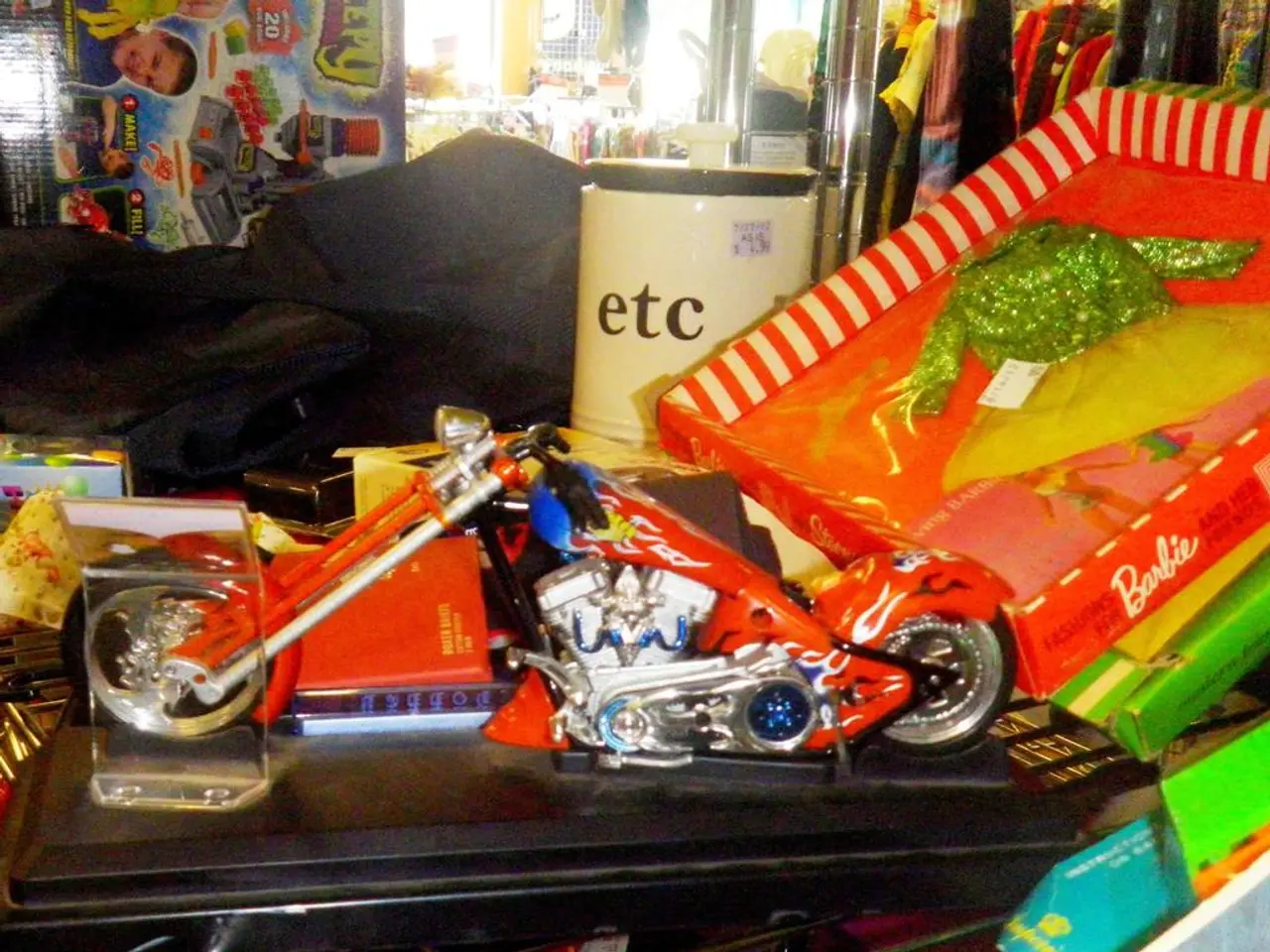Competition ensues!
The Science Museum has launched an exciting new event for families this summer, called "Power UP". This hands-on, interactive gaming experience, running from 25 July to 7 August (excluding 6 August), invites visitors to create their own cardboard gaming controllers and play popular games like Pac-man using Makey Makey electronics.
Nicolette Chin, the Special Events Developer (Families and Accessible Programmes) at the Science Museum, is leading the charge. The workshop aims to be accessible to a broad audience, with no long programming sessions required for designing video games. Instead, the main focus is on creating tactile gaming experiences.
During the workshop, participants are provided with a blank cardboard shape of a gaming controller to decorate and embellish. To bring these creations to life, Makey Makey kits are used. Makey Makey includes a Makey Makey board, alligator clips, and various possibilities for fun. The cardboard gaming controllers can be used to play various video games, such as Pac-man.
To transform simple cardboard and conductive materials into a fully functional gaming controller, follow these steps:
- Gather materials: You will need a Makey Makey kit, cardboard to build the controller base, conductive materials (such as aluminum foil, play dough, copper tape, or conductive pencils), and alligator clip wires to connect the cardboard controls to the Makey Makey board.
- Design the cardboard controller: Cut and shape cardboard pieces to mimic the buttons or joystick controls for directions (up, down, left, right) and any other inputs (such as a start button). The cardboard is non-conductive, so you will cover the button areas with a conductive material like aluminum foil or conductive paint.
- Make the controls conductive: Cover the areas of the cardboard that function as buttons with conductive material. For instance, use aluminum foil patches as conductive buttons. Alternatively, use conductive play dough molded into button shapes. Conductive pencils or copper tape can also be drawn or applied over the cardboard buttons to make them electronically responsive.
- Wiring with Makey Makey: Attach alligator clips from the Makey Makey board’s input terminals to each conductive button on the cardboard. Connect the Makey Makey ground clip to the player’s hand or a large foil area on the controller (sometimes the cardboard itself has a “ground” foil area) to complete the circuit when pressing buttons.
- Connect to computer and configure: Plug Makey Makey into the computer via USB. The Makey Makey emulates keyboard inputs, so by pressing the cardboard buttons, it sends corresponding key signals recognized by games like Pacman. You need to ensure that in your game (e.g., Pacman), the control keys correspond to the Makey Makey outputs (typically arrow keys or WASD).
- Testing: Once connected, test each button by pressing it and verifying the input is received by the game. Adjust conductive material or wiring as needed to ensure reliable input.
This process lets you transform simple cardboard and conductive materials into a fully functional gaming controller compatible with keyboard-input games like Pacman through the Makey Makey interface. Additional tips include using play dough for tactile buttons, labelling buttons clearly on cardboard, and using foil tape to secure wires to the cardboard for better durability.
The Game On workshop location is opposite the Agriculture gallery, on Floor 1. Workshops are held from 12.00 to 13.30 and 14.30 to 16.00 on weekdays, and from 14.30 to 16.00 on weekends. Places for the Game On workshop are limited and it is suitable for children aged 7 and over.
Extra workshops, storytelling sessions, drama characters, and family-friendly tours are available at weekends and during school holidays. The Learning team at the Science Museum also runs free science shows every day of the week.
Some participants even connected themselves and their parents to the circuit, allowing them to play the drums by high-fiving each other. So, come along and join the fun at the Science Museum's Power UP event! Tickets can be purchased online.
- The Science Museum's new event, "Power UP", offers a lifestyle experience this summer that includes fashion-and-beauty, food-and-drink, home-and-garden, relationships, pets, travel, cars, books, education-and-self-development, personal-growth, shopping, social-media, movies-and-tv, career-development, entertainment, celebrities, job-search, and pop-culture.
- Nicolette Chin, the Special Events Developer (Families and Accessible Programmes) at the Science Museum, is leading the interactive gaming event, Power UP, which runs from 25 July to 7 August (excluding 6 August).
- The hands-on workshop, Power UP, invites visitors to create their own cardboard gaming controllers using Makey Makey electronics.
- Participants in Power UP are provided with a blank cardboard shape of a gaming controller to decorate and embellish, and then use to play video games like Pac-man.
- To create a fully functional gaming controller, gather materials such as a Makey Makey kit, cardboard, conductive materials, and alligator clip wires.
- Design the cardboard controller by cutting and shaping cardboard pieces to mimic the buttons or joystick controls, then cover the button areas with conductive materials.
- Cover the cardboard button areas with conductive materials to make them electronically responsive, like using aluminum foil patches as conductive buttons, or conductive play dough molded into button shapes.
- Attach alligator clips from the Makey Makey board’s input terminals to each conductive button on the cardboard to complete the circuit.
- Plug Makey Makey into the computer to emulate keyboard inputs for games like Pacman and ensure that control keys correspond to the Makey Makey outputs.
- Test each button by pressing it and verifying the input is received by the game to ensure reliable input.
- Additional workshops, storytelling sessions, drama characters, and family-friendly tours are available at weekends and during school holidays.
- The Science Museum's Learning team also runs free science shows every day of the week.
- Some participants even connected themselves and their parents to the circuit, allowing them to play the drums by high-fiving each other in the Power UP event, encouraging social interaction and family bonding.





